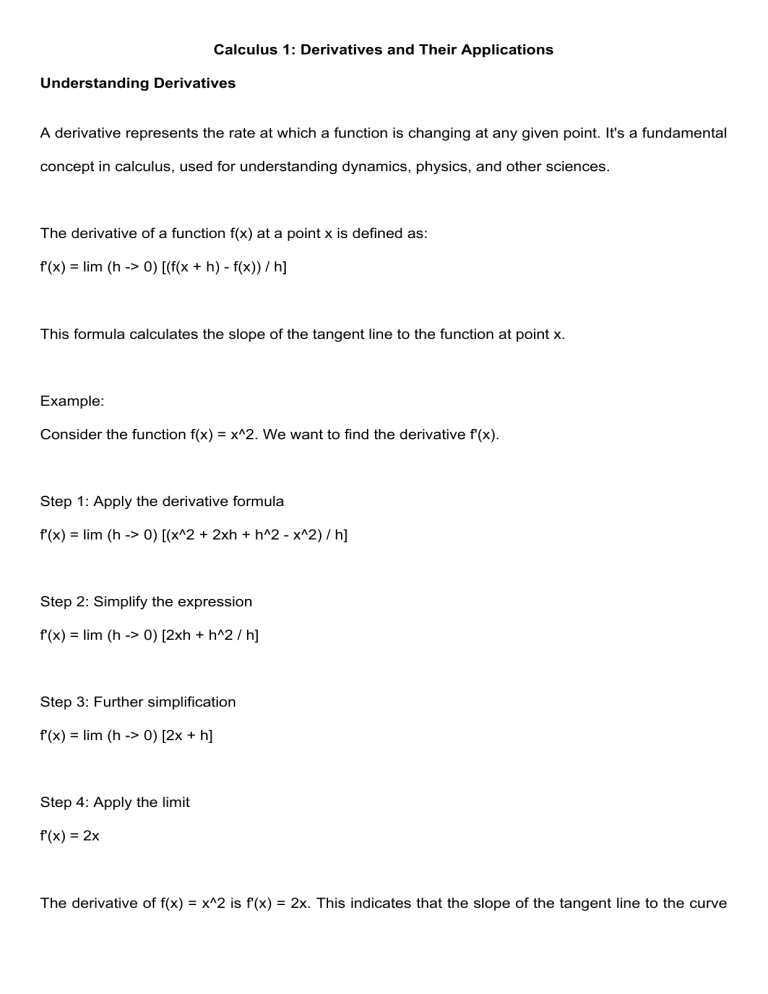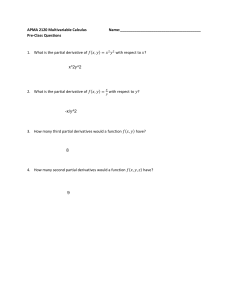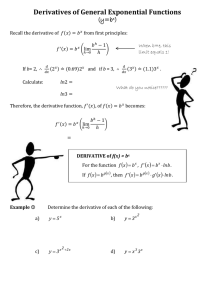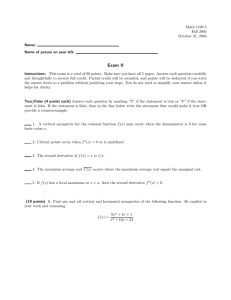
Calculus 1: Derivatives and Their Applications Understanding Derivatives A derivative represents the rate at which a function is changing at any given point. It's a fundamental concept in calculus, used for understanding dynamics, physics, and other sciences. The derivative of a function f(x) at a point x is defined as: f'(x) = lim (h -> 0) [(f(x + h) - f(x)) / h] This formula calculates the slope of the tangent line to the function at point x. Example: Consider the function f(x) = x^2. We want to find the derivative f'(x). Step 1: Apply the derivative formula f'(x) = lim (h -> 0) [(x^2 + 2xh + h^2 - x^2) / h] Step 2: Simplify the expression f'(x) = lim (h -> 0) [2xh + h^2 / h] Step 3: Further simplification f'(x) = lim (h -> 0) [2x + h] Step 4: Apply the limit f'(x) = 2x The derivative of f(x) = x^2 is f'(x) = 2x. This indicates that the slope of the tangent line to the curve Calculus 1: Derivatives and Their Applications at any point x is 2x. Derivatives have various applications, including in physics for determining velocity and acceleration, in economics to find marginal cost and revenue, and in engineering for modeling and analysis.




